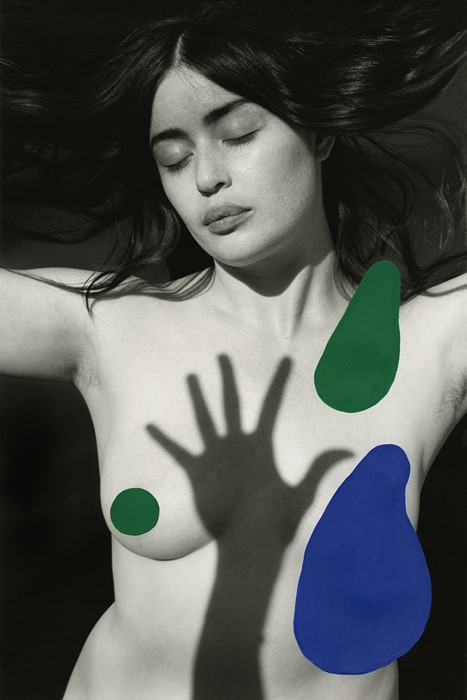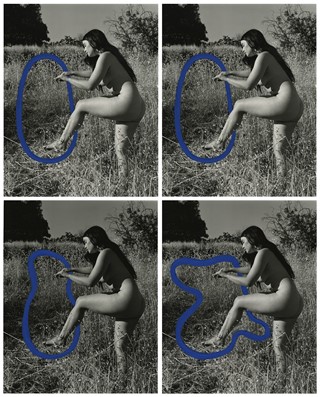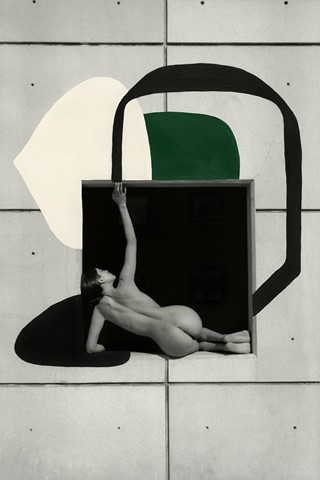Amanda Charchian talks us through her newest body of work – an aesthetic experiment in colour, texture and form
LA-based artist Amanda Charchian is, first and foremost, not really LA-based at all. “That’s where my apartment is,” she tells me while in town for the annual Photo London fair. Instead, she travels between this city, that one, and New York, for exhibitions, editorial projects and her personal work, as each tumbles into her diary. Which, at the moment, is often, so she has developed into something of a nomad. Not that she minds.
This time, her trip is due to the aforementioned photo fair, at which Charchian showed the beginnings of a newly conceived personal project at Huxley-Parlour gallery’s unforgettable stand – which presented the work of nine contemporary female photographers, including Cig Harvey and Jocelyn Lee. Progressing conceptually from her recent projects, this new body of work presents an aesthetic exploration of colour, texture and form; Charchian seeks to find new, tactile ways in which a body can interact with an architectural structure. Here, she tells AnOther about the importance of shadow, and how Baldessari influenced her practice.

On undoing her art school education…
“When I started going to art school at Otis [College of Art and Design, in Westchester, LA] I studied Painting and Sculpture, and the photography kids were just so different. All of our teachers were West Coast minimalists and conceptualists – their teachers were like Baldessari, you know? So you were discouraged from putting anything in the work that didn’t have a conceptual function; if you used red thread, it had to be about what the symbol of red thread symbolises, for example, in Judaism. So you ended up stripping everything away until you only had the essential elements.
“I fluctuate between being an extreme maximalist and an extreme minimalist, in a lot of different ways, so I had to train my brain to think one way and then undo it. Now I’m finding suitable areas on both sides. Art school is a training ground to understand why you do what you do – it’s kind of like expensive therapy in a way.”
On the foundation of her new body of work…
“For me colour, texture and form are always the essential elements in art, and so I was thinking about form, and what it feels like to be in a space, and the difference between a straight line, a 90 degree corner, a curved corner and an enclosed one.
“I also started thinking about this place called the Dream House in New York. It’s an art installation by composer La Monte Young and visual artist Marian Zazeela, that’s been there for a very long time. It’s this space that’s pure white, with one red lamp and one blue one, and there is all of this sound coming out of the speakers, so that as you walk around it you’re curating your own song. I was thinking, if you’re sensitive enough, your whole life is that in a way – every ten minutes you’re interacting with a space, and your body is changing, you know?
“We describe photography in terms of foreground, background, figure, and landscape. That’s so abstract, but at the same time that’s all photography is: you have something, and then you have not something. So I tried to break it down – I was thinking about the simple things like form and colour and texture, and the other invisible structures that inform our sense of shape as we’re in the world. Which brought me to shadow. Shadow changes your visual space, but it’s not physical, even though it’s based on where you are.
“It’s hard to talk about [collaging these forms together in photographs] because you do it so intuitively, but at the same time it comes from a conceptual place – you’re trying to slow down everything you do, and to become aware of it.”

On the gratifying physicality of photography…
“Photography for me started as a very handmade thing: I would get negatives and go to the darkroom, and I would make these like physical objects that I would then dry, and then press. I still work that way sometimes, but then when you do a commercial job you scan a negative and there it goes. You don’t have the time with the physical thing.
“One day I was just in my studio and was really inspired by Baldessari, because he used to take those found pictures and just put dots on peoples’ heads. I love the contrast of primary colours on these black and white images, but they’re removed from emotion and feeling – they have a cinematic quality.”

On creating a sense of intimacy with an environment…
“How do you make something graphic feel sensual? I think everything I’ve ever made has been about intimacy – it’s always been about how close you can get to your environment. I think you can have intimacy with places, not just with people; maybe this body of work is about that.”

For more information on Amanda Charchian’s work, visit Huxley-Parlour.
